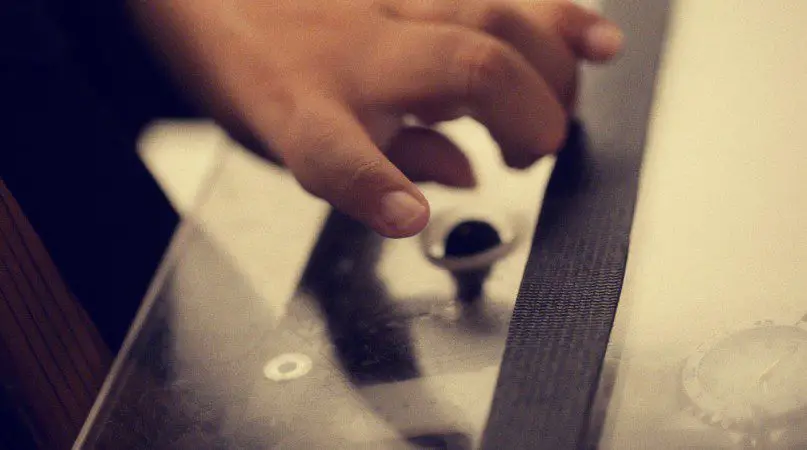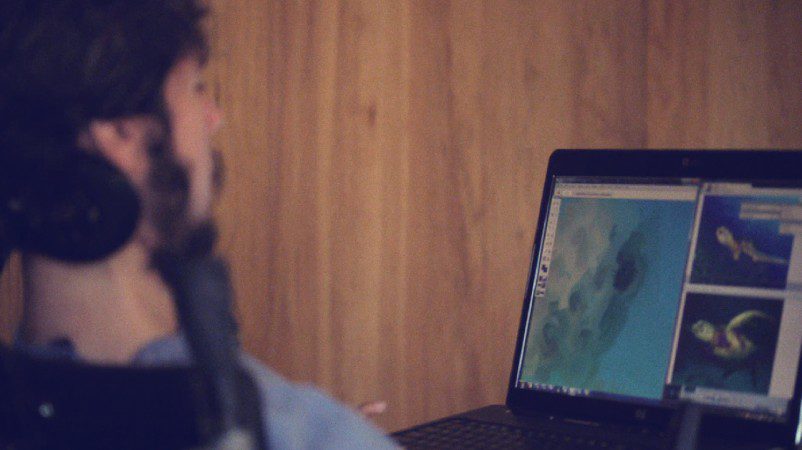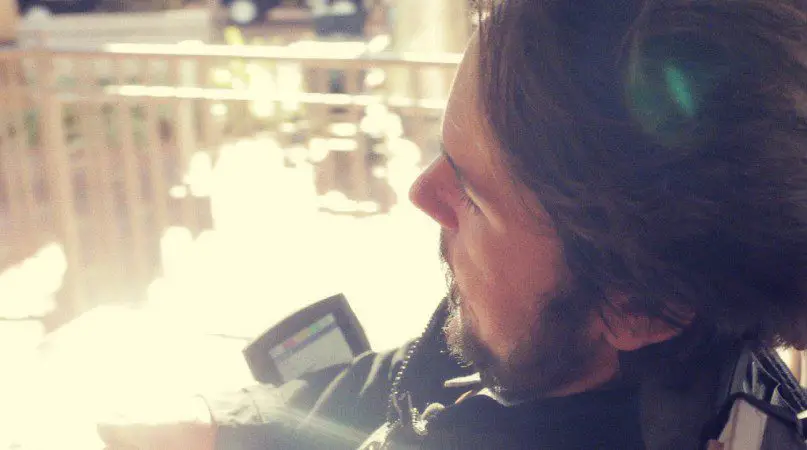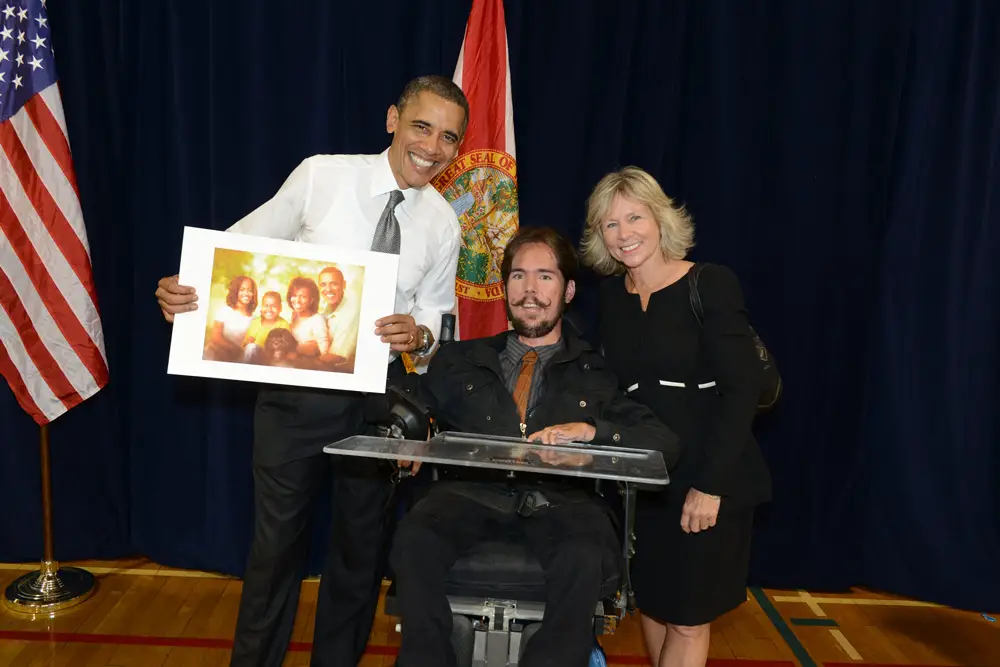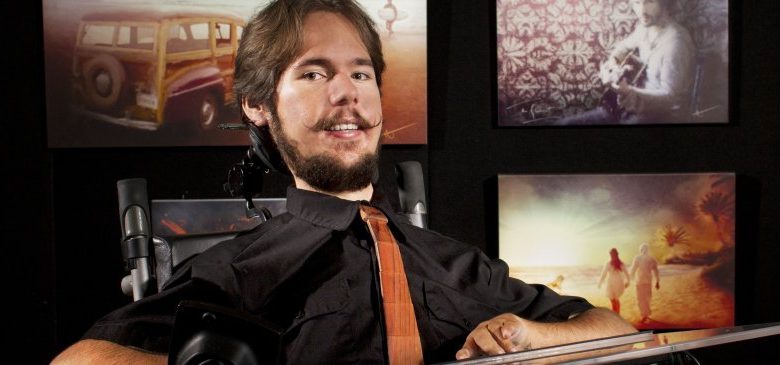
AJ Brockman: Differently abled through digital art
A rising star, digital artist AJ Brockman creates traditional and modern art using computer software. We asked AJ to talk us through how he started creating art, his influences, and the success he has had.
Can you start by telling us a little about yourself?
My name is AJ Brockman and I’m a digital artist. I also have spinal muscular atrophy (SMA), a progressive neuromuscular disease, and have been using a wheelchair since the age of two. My disability definitely influences who I am but it does not define me either as an artist or as an individual. I view myself as being ‘differently abled’ rather than ‘disabled’, and I live life to the fullest every day.
How did you get into digital art?
It was probably out of necessity more than anything else. As a kid I still had fairly good use of my hands and was able to paint traditionally using a paint brush. I developed an impressionistic painting style because ‘dabbing motions’ were physically easier for me to do than actual brushstrokes.
I mainly worked with acrylics and was heavily inspired by Monet. As I began to lose the use of my hands I was forced to come up with a different way to be productive and express myself. I found the answer at high school when I took a course called Commercial Art Technology and learned to use computer software for graphic design.
Once I mastered the tools and programmes, the transition from using brushes to using a computer was seamless. I create all of my artwork by manipulating the computer touchpad with literally one finger on my left hand. Creating a full work of art is an extremely time-consuming process, but through it I am able to achieve maximum precision and detail. I then use sophisticated printing methods to put my work onto canvas and even metal.
What inspires your work?
I usually just paint what I am in the mood to paint. That said, for me, living in South Florida is like living in paradise, so I draw lots of inspiration from the beachside lifestyle here. Not only is this something I truly enjoy, but it resonates extremely well with my audience; some of my most popular pieces have that South Florida-beachy theme .
I have tried experimenting with some autumn settings this year and have been pleased with the results, so that is something I might continue to develop. I’m constantly dabbling in other styles and subjects.
I try to have at least one piece that everyone can relate to, but again, I paint what I’m in the mood to paint, which is actually the biggest reason I decided to pursue fine art. I was tired of the commercial art industry and having to strictly adhere to an art director’s or client’s vision.
I have started to accept more commission work lately, everything from pet portraits to client-directed landscapes. With every new project I do a lot of research into the emotional connection the client has to the subject, historical significance and/or reason for the chosen subject matter.
This, in turn, is like a miniature history lesson, and I find myself always learning something new. Not only does this enhance my actual technique and skills, but it also leads to a more fulfilling experience overall. My clients and I go through what I like to call a ‘journey together’ and it becomes much more than just an art commission.
I am also inspired by others’ works. I try to follow all the latest trends and upcoming artists in both the digital and traditional realms. If I see a painting, or drawing, that resonates with me in terms of both the subject matter and skills/techniques used, I get that sense of “Wow! That’s really good! I need to step up my game.”
What are the challenges you have faced or barriers you have had to overcome?
One of the most common misconceptions of my work is that it is parallel with digital photography. Although my work is often compared to it, it’s not the same thing by any stretch of the imagination.
Another issue is that when people look at my work they don’t see brushstrokes; believe it or not, people subconsciously look for that. I try to use the latest technology in digital printing to replicate a traditional painting, but the lack of brushstrokes is still an issue for some people. That’s why I’m truly grateful for the people who ‘get it’. Hearing their comments reassures me I am doing what I was meant to do.
Perhaps the biggest challenge I face is just getting people to recognise me as the artist. I sometimes wish I had one of those giant arrow signs pointing directly at me saying “artist”. People are more inclined to ask my booth attendants or crew members if they are the artist. I try to be as personable and as forthcoming as I can, and that helps people to understand that it is my work. Unfortunately, some people still don’t believe ‘disabled’ people can be productive members of society.
This does make me feel a certain sense of responsibility to educate others on what people with disabilities can accomplish, and my artwork is a great way to do it. I truly believe the only ‘disability’ in life is a bad attitude. You can accomplish great things as long as you put your mind to it and have the drive and determination.
What current projects do you have on the go?
I always try to stay extremely busy, and as of late, I have become a pro at being busy.
I have a bunch of upcoming art shows and exhibits. This includes a rotating gallery at a very prestigious bank here in the states, Northern Trust. I will also be participating in one of South Florida’s biggest art and music festivals, Sunfest, along with many other commitments.
I am involved with Canine Companions for Independence, one of the nation’s premier service dog organisations. This year I received my second service dog, Dre, and have the honor of being the Featured Graduate for one of their largest fundraisers. To commemorate this incredible event, I have created a one-of-a-kind digital painting.
Community involvement is also very important to me. I regularly volunteer at local schools giving speeches and donating my artwork for fundraisers. I’ve also started working with the local Muscular Dystrophy Association to give digital art tutorials/seminars to others with physical disabilities.
Finally, one of my largest and most exciting projects to date: I recently finished a portrait of President Obama and his family. Although this piece was not personally commissioned by the president, I recently had the honour of presenting it to him personally.
We heard you’re doing a documentary. Would you mind telling us all about it and how you got involved?
My most important new project is starting a non-profit production company, No White Flags, with my manager, Art Brownstein. We plan to produce full-length documentaries on individuals who never give up and have overcome extreme obstacles in their lives, be it a physical or mental disability.
To further support our mission, we will give special consideration to hiring people with disabilities to be part of our production team (videographers, musicians, playwrights, etc.). I’m really excited that I will be collaborating with industry-renowned reporters, producers and distributors.
Our first documentary will be a feature on yours truly: a combination of my life story, artwork and barrier breaking, with lots of funny moments along the way. In future productions, we will feature lots of other incredible ‘differently abled’ people. No White Flags will be launching a significant fundraising campaign through indiegogo in the next few days, and I encourage everyone to see how they can get involved.
By AJ Brockman
You can find out more about AJ Brockman and contact him through is website, plus see more of his digital art at Single Handed Studio.
Check out…
• iPad art: helping disabled artists to create masterpieces.
• Dconference: disability and the internet.
• Arlene on the Scene: disability and children’s books.
Do you have a creative side? Let us know about it by emailing us at editor@disabilityhorizons.com, messaging us on Facebook, tweeting us @DHorizons or leaving your comments below.
